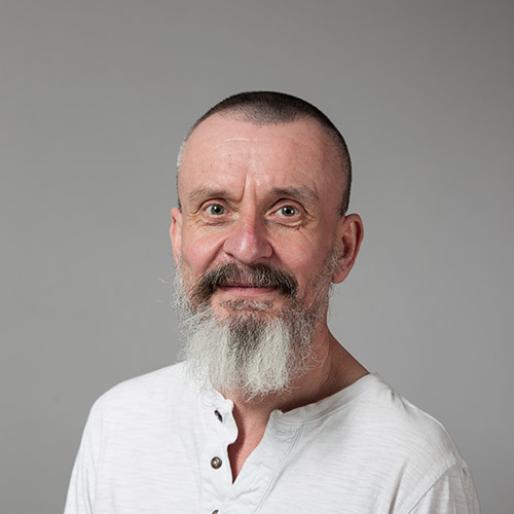The big picture: using wildflower strips for pest control
Swarming midges are attracted towards the centre of the group and repelled by one another in almost equal measure, according to a new study. Laboratory swarms of the non-biting midge Chironomus riparius were monitored and then modelled mathematically. Male midges form an elliptical swarm to attract females, but there is trade-off between the maximum group size needed to size lure in potential mates, and the physical constraints of swarm size caused by environmental factors such as wind.
The swarm is in constant tension – always on the verge of breaking up. What keeps them together is that the individual midges have evolved to both maintain distance from one another and at the same time form a group.
Flying insects do not circulate around the centre of the swarm in an orderly fashion but instead have more complicated erratic flight patterns. Maximizing the perimeter length increases the likelihood that the swarm is detected by females. The modelling predicts that the trade-off is optimized when, as observed, the swarm aspect ratio is about 1:1.2.
“The midge swarms are poised at the cusp of a stable-unstable phase transition,” said Rothamsted physicist Andy Reynolds. “In other words, the swarm is in constant tension – always on the verge of breaking up. What keeps them together is that the individual midges have evolved to both maintain distance from one another and at the same time form a group.”
This pattern of behaviour maximises breeding success by attracting mates. Even when a female enters the swarm, and is pursued by a male, the swarm keeps its shape. Individuals may be drawn towards her, but this force of attraction is weaker than the negative "impulse" for the males to stay away from each other.
Staying evenly spaced means there is less competition between males. Which means that, as a group, they spend less energy and have more overall mating success.
The mechanisms the midges are using to maintain the swarm and to attract females are currently unknown. It is unlikely that the midges are using sound to “organise” themselves. Although some swarming insects are known to be very sensitive to acoustic communication, it is restricted to close range pair interactions. Moreover, in two specifies of mosquitoes, at least, there is no evidence of long-range sex pheromones involved in swarm detection and recognition by females. If females can detect mating swarms visually from afar then the elongated elliptical shape of the swarm may provide a benefit. In this case the midge swarm is around 30% longer than a purely circular gathering containing the same number of males.
“One remarkable aspect of these studies is the similarity of swarm dynamics with self-gravitating systems like elliptical galaxies,” said Reynolds. “These are filled with old red stars that have random orbits but cohere into an elliptical shape - so there may be some broader natural organisational mathematics in play here.”

Physicist
Rothamsted Research is the longest-running agricultural research institute in the world. We work from gene to field with a proud history of ground-breaking
discoveries in areas as diverse as crop management, statistical interpretation and soil health. Our founders, in 1843, were the pioneers of modern
agriculture, and we are known for our imaginative science and our collaborative approach to developing innovative farm practice.
Through independent research, we make significant contributions to improving agri-food systems in the UK and internationally, with
economic impact estimated to exceed £3 bn in annual contribution to the UK economy. Our strength lies in our systems approach, which combines strategic research,
interdisciplinary teams and multiple partnerships.
Rothamsted is home to three unique National Bioscience Research Infrastructures which are open to researchers from all over the world:
The Long-Term Experiments,
Rothamsted Insect Survey and the
North Wyke Farm Platform.
We are strategically funded by the Biotechnology and Biological Sciences Research Council (BBSRC), with additional support from other national and
international funding streams, and from industry. We are also supported by the Lawes Agricultural Trust (LAT).
The Biotechnology and Biological Sciences Research Council is part of UK Research and Innovation, a non-departmental public body funded by a grant-in-aid
from the UK government.
BBSRC invests to push back the frontiers of biology and deliver a healthy, prosperous and sustainable future. Through our investments, we build and support a vibrant,
dynamic and inclusive community which delivers ground-breaking discoveries and develops bio-based solutions that contribute to tackling global challenges,
such as sustainable food production, climate change, and healthy ageing.
As part of UK Research and Innovation (UKRI), we not only play a pivotal role in fostering connections that enable the UK’s world-class research and innovation system
to flourish – we also have a responsibility to enable the creation of a research culture that is diverse, resilient, and engaged.
BBSRC proudly forges interdisciplinary collaborations where excellent bioscience has a fundamental role. We pioneer approaches that enhance the equality, diversity,
and inclusion of talent by investing in people, infrastructure, technologies, and partnerships on a global scale.
The Lawes Agricultural Trust, established in 1889 by Sir John Bennet Lawes, supports Rothamsted Research’s national and international agricultural science through the provision of land, facilities and funding. LAT, a charitable trust, owns the estates at Harpenden and Broom's Barn, including many of the buildings used by Rothamsted Research. LAT provides an annual research grant to the Director, accommodation for nearly 200 people, and support for fellowships for young scientists from developing countries. LAT also makes capital grants to help modernise facilities at Rothamsted, or invests in new buildings.